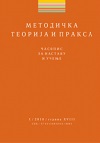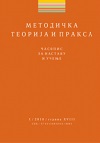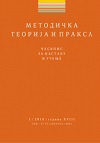
МОДЕЛ ОБРАДЕ ТЕКСТА ПОМОЋУ ДОМИНАНТНОГ КЊИЖЕВНОГ ЛИКА (МОГУЋНОСТИ ПРИМЈЕНЕ НА ПРИМЈЕРУ ЕПСКЕ ПЈЕСМЕ БОЛАНИ ДОЈЧИН)
Modern methods of teaching and its practice insist of modernization literature lessons by using different models according to the content of the lesson. They should be immanent to each other. This research is about model of analyzing the text by using the main character. Also, it shows the applicability of this model to the teaching lessons of Serbian epic poetry. In this research it is applied on the poem Ailing Dojčin / Bolani Dojčin. The usage of this method shows some relevant results. It increases the level of creativity while teaching and points out creative potentials of this model. The aim of this work is to make the content of the lessons of traditional literature more approachable, undestandable and interesting to the students. One of the conclusions is that focusing on the main character while teaching directly leads to the essence of this poem, but indirectly to the some more. It indicates the complexity of typification and individualisation epic characters, which is the point of students understanding and experiencing epic poetry. Only by regular process students can solve the problem and completely understand the text by themselves.
More...

